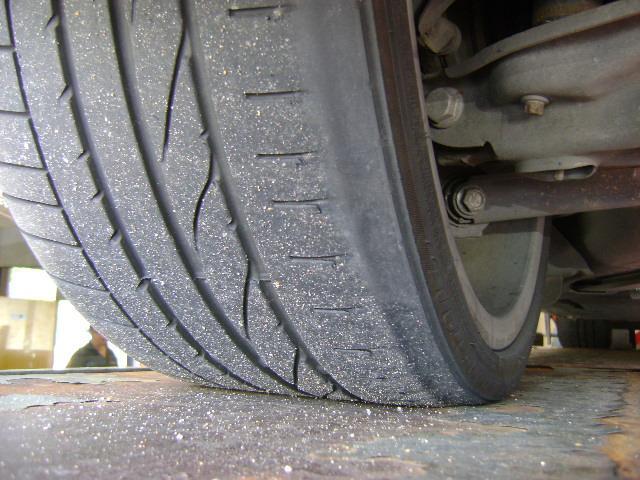Executive Summary
-
Regular vehicle safety checks should be deployed to car and 2-wheeler fleets.
-
Safer vehicles lead to lower collision rates, keeping employees safe on the roads and saving businesses time and money in employee downtime, insurance and repair costs.
-
Car and 2-wheeler fleets can learn from the best practices in trucking fleets where vehicle checks are mandatory.
-
However, checks can be adapted for car and 2-wheeler fleets so that the requirements are kept simple, and the admin burden on management is minimal.
-
Deploying vehicle safety checks via a driver app is a simple, easy-to-implement digital solution.
In Depth Article
There are rules in most countries for the daily roadside checks required on commercial vehicles. And when you get into the realms of public-service vehicles (PSVs) and heavy good vehicles (HGVs), the rules become even more stringent.
A legal obligation, they form an official report that confirms a driver has completed the inspection. Often, this must be done pre-trip and post-trip specifying any defects they notice. As you would expect, these inspections play an important part in improving road safety.
A walkaround check on an HGV is extremely comprehensive documenting several checks that involve interior, exterior and engine bay inspection of key operational and safety components. Any defects are reported in writing and vehicles taken off the road where specific checks are failed. A check like this can easily take 30 minutes as forms are completed.
But can we really expect drivers of cars and 2-wheelers used for business travel to do the same, particularly when the same legal requirements aren’t there?
Overcoming challenges
John Pryor, chair of a fleet operators association in the UK, has previously said:
“Some drivers tend to think a company car is a bit like the photocopier: always available and it works most of the time. Of course, motor vehicles are hugely more valuable assets than photocopiers. Checks should be undertaken regularly, and any defects should be reported so rectification work can take place.”
Fleet policies will often state that drivers should carry out weekly checks on cars in areas such as tyres, brakes, windscreen and mirrors, but this is difficult to monitor and ultimately enforce. Car drivers are also less likely to have been trained in how to perform these checks effectively.
Technology has advanced and today’s motorists have become reliant on manufacturer service intervals and dashboard warning lights to alert them to problems. However, the danger is that, even with this safeguard, they do not comprehensively cover all safety aspects of the vehicle, particularly for high mileage drivers, and sadly dashboard warnings can be ignored.
As a result, we far too regularly see cars with mechanical issues or driving incidents due to maintenance issues, and I personally have experienced what happens if you rely on service intervals alone!
I found myself driving along when the tyre pressure monitoring system alerted me of low tyre pressures. Fortunately, my car had run flat tyres, so I was able to make it to the nearest garage for what I thought would be a puncture fix. I was surprised when the garage owner informed me that the tyre was irreparable and then showed me the image of the inside edge of my rear tyre.

Actual image of my tyre
My car was a typical company car
-
New Car (under three years old)
-
Serviced to manufacturer schedule
-
Tyres checked in passing occasionally as I got into the car
I was lucky - runflat tyres saved me from a serious incident - but it highlighted to me why even car drivers can benefit from regular vehicle inspections and taking a few minutes to give their vehicle more than just a passing look.
What is practical for today’s drivers on a vehicle check that isn’t mandated by the government?
Checks for Car and 2-wheelers- keep it simple!
Vehicle safety checks do not need to be an onerous and time-consuming activity.
The FLOWERY test is one framework for a time-efficient but comprehensive check.
Fuel – Is there at least a third of a tank, and do you know if it takes petrol or diesel?
Lights – Do they work? Remember to check indicators, fog, reverse and brake lights (test against a wall if you don’t have a passenger to help you check).
Oil – Park on flat and check the lines on the dipstick when the engine is cold.
Water (& wipers) – Is there enough to clean windscreens – with a mix of water and windscreen wash. Has the radiator been topped up (when the engine is cool)? Also, check the wipers for wear and tear.
Electrics – Are there any warning lights/symbols? If yes, report them or visit a garage. Also note if the vehicle is struggling to start, it might be a sign that a new battery is needed. Check for corrosion on the battery.
Rubber – Check the tread as water on the roads is channelled through the grooves. If you have one to hand, use a coin to see if the edge disappears. Ideally, there should be 2mm of tread. Check the wear markers between the grooves and look for cuts, tears and bulges. Don’t forget to check the inside and outside edges of the tyre for extreme wear and check if the tyre pressure looks low.
You – Make sure you are okay as the driver. Take into account eyesight, medication, alcohol and tiredness. Do not set off if you aren’t fit to drive.
The advantage of ‘FLOWERY’ is that it’s simple, quick and easy to remember. It doesn’t require years of training or specialist equipment, and it’s something that drivers will benefit from doing on their own vehicles.
Simple tools
It might feel daunting for fleet managers or HSE leads to encourage and monitor checks in a car fleet, but with the widespread adoption of smartphones by drivers and the development of apps that can guide users through checks and record the results it is easier than ever to encourage periodic checks.
Vehicle check apps not only remind drivers to check their vehicles periodically, but with a structured set of checks help guide the driver to ensure they don’t miss anything. They can also give fleet managers clear reporting on checks that have been carried out, as well as any issues drivers have picked up. That means that they are also an extremely valuable tool in LCV and HGV fleets.
Ultimately the key to successful policies in car and 2-wheeler vehicle safety checks is to view and socialise the process as less of a compliance activity, as it would be with an LCV/HGV, and more in terms of selling the simplicity and the benefits, even going as far as rewarding drivers for performing checks.
Conclusion
Learning from the best practices in LCV/HGV fleets, a successful car or 2-wheeler vehicle check culture can be achieved without it being an administrative burden on the business. Drivers will benefit from being safer on the road whilst your business saves time and money in employee downtime, insurance and repair costs.






